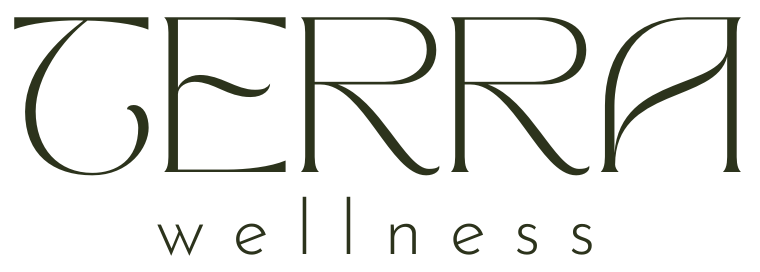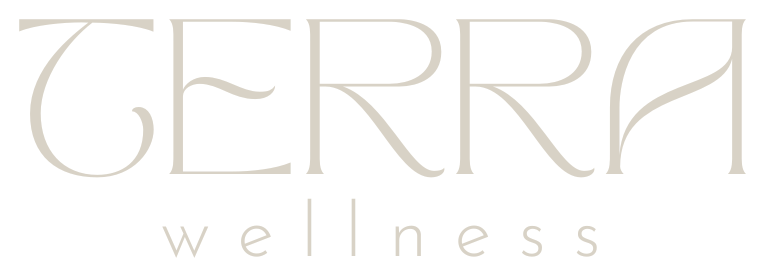Vibration Machine Exercises: Complete Workout Guide
What are the best vibration machine exercises for beginners and advanced users in Australia? In Australia, vibration machine exercises enhance strength, balance, circulation, and performance by activating more muscle fibers than standard training. Beginners can start with standing, squats, and calf raises, while advanced users progress to planks, lunges, and plyometrics. With over 50 workouts, this guide helps you train smarter, safer, and more effectively.
This comprehensive guide contains over 50 vibration machine exercises designed for all fitness levels. From beginner-friendly movements to advanced athletic training, you'll discover how to maximize your vibration training results with proper form, progressive programming, and targeted muscle activation.
Getting Started with Vibration Exercises
Vibration machine exercises amplify the effects of traditional movements through mechanical stimulation. Understanding the fundamentals is crucial for safe and effective training.
How Vibration Enhances Exercise
Vibration Training Mechanisms:
- Involuntary muscle contractions: Vibration triggers reflexive muscle activation
- Enhanced proprioception: Improved body awareness and balance
- Increased muscle recruitment: More muscle fibers activated per movement
- Accelerated adaptation: Faster strength and conditioning gains
- Improved circulation: Enhanced blood flow to working muscles
Exercise Intensity Guidelines
Vibration Training Parameters
Frequency Settings:
- Low (15-25 Hz): Relaxation, circulation, beginners
- Medium (25-35 Hz): Strength training, muscle building
- High (35-50 Hz): Power training, athletic performance
Duration Guidelines:
- Beginners: 10-15 minutes total session
- Intermediate: 15-25 minutes total session
- Advanced: 20-30 minutes total session
Frequency of Training:
- Beginners: 2-3 sessions per week
- Intermediate: 3-4 sessions per week
- Advanced: 4-6 sessions per week
Safety Fundamentals
Essential Safety Guidelines
- Medical clearance: Consult healthcare providers if you have health conditions
- Proper warm-up: Always start with low intensity
- Gradual progression: Increase intensity and duration slowly
- Maintain form: Quality over quantity in all movements
- Listen to your body: Stop if you experience pain or discomfort
- Stay hydrated: Drink water before, during, and after sessions
Basic Positions and Form
Mastering basic positions is essential before progressing to complex exercises. These foundational positions form the basis for all vibration training movements.
Fundamental Stance Positions
1. Basic Standing Position
- Feet hip-width apart, parallel
- Knees slightly bent (never locked)
- Core engaged, spine neutral
- Shoulders relaxed, arms at sides
- Weight evenly distributed
2. Athletic Stance
- Feet slightly wider than hip-width
- Toes pointed slightly outward
- Deeper knee bend (quarter squat position)
- Hands on hips or crossed over chest
- Ready position for dynamic movements
3. Narrow Stance
- Feet close together (6 inches apart)
- Challenges balance and stability
- Increased difficulty level
- Use handrails if needed
- Progress gradually to this position
Hand and Arm Positions
Support Levels (Easiest to Hardest):
- Both hands on handrails: Maximum support
- One hand on handrail: Moderate support
- Hands on hips: Minimal support
- Arms crossed over chest: No external support
- Arms overhead: Maximum challenge
Beginner Exercises (20 Exercises)
These exercises are perfect for those new to vibration training. Focus on proper form and building tolerance to the vibration stimulus.
1. Basic Standing
Instructions:
- Stand with feet hip-width apart
- Hold handrails for support
- Keep knees slightly bent
- Maintain neutral spine
- Breathe normally
Duration: 30-60 seconds
Frequency: 15-20 Hz
2. Supported Weight Shifts
Instructions:
- Start in basic standing position
- Hold handrails for support
- Slowly shift weight to right foot
- Hold for 5 seconds, return to center
- Repeat to left side
Repetitions: 5-8 each side
Frequency: 15-20 Hz
3. Gentle Calf Raises
Instructions:
- Stand with feet parallel
- Hold handrails for balance
- Slowly rise onto toes
- Hold for 2-3 seconds
- Lower slowly with control
Repetitions: 8-12
Frequency: 18-22 Hz
4. Heel-Toe Standing
Instructions:
- Place one foot directly in front of the other
- Heel of front foot touches toe of back foot
- Hold handrails for support
- Maintain upright posture
- Switch foot positions halfway through
Duration: 20-30 seconds each position
Frequency: 15-18 Hz
5. Supported Single-Leg Stand
Instructions:
- Hold handrails with both hands
- Lift one foot slightly off platform
- Balance on standing leg
- Keep standing knee slightly bent
- Maintain upright posture
Duration: 10-20 seconds each leg
Frequency: 15-20 Hz
6. Quarter Squats
Instructions:
- Stand with feet hip-width apart
- Hold handrails for support
- Lower into shallow squat (quarter depth)
- Keep chest up, knees behind toes
- Return to standing position
Repetitions: 6-10
Frequency: 20-25 Hz
7. Marching in Place
Instructions:
- Stand with feet hip-width apart
- Hold handrails for support
- Lift one knee to comfortable height
- Lower and repeat with other leg
- Maintain slow, controlled rhythm
Repetitions: 10-15 each leg
Frequency: 18-22 Hz
8. Supported Toe Taps
Instructions:
- Stand with heels on platform
- Hold handrails for support
- Lift toes up, keeping heels down
- Lower toes back to platform
- Maintain steady rhythm
Repetitions: 12-15
Frequency: 20-25 Hz
9. Gentle Arm Circles
Instructions:
- Stand in basic position
- Extend arms out to sides
- Make small circles with arms
- Maintain balance and posture
- Reverse direction halfway through
Duration: 30 seconds each direction
Frequency: 18-22 Hz
10. Seated Position
Instructions:
- Sit on edge of platform (if machine allows)
- Feet flat on floor or platform
- Maintain upright posture
- Hands on thighs or crossed
- Breathe deeply and relax
Duration: 1-2 minutes
Frequency: 15-20 Hz
Additional Beginner Exercises (11-20)
11. Wall Push-Ups (Hands on Platform)
- Stand arm's length from wall
- Place hands on platform against wall
- Perform push-up motion
- 8-12 repetitions at 20-25 Hz
12. Supported Side Steps
- Hold handrails, step side to side
- Keep one foot on platform always
- 10-12 steps each direction at 18-22 Hz
13. Gentle Torso Twists
- Stand with hands on hips
- Slowly rotate torso left and right
- 8-10 twists each direction at 15-20 Hz
14. Supported Forward Bends
- Hold handrails, slowly bend forward
- Keep knees slightly bent
- 5-8 repetitions at 15-18 Hz
15. Ankle Pumps
- Stand normally, flex and point feet
- Alternate between positions
- 15-20 pumps at 20-25 Hz
16. Supported Knee Lifts
- Hold handrails, lift knees alternately
- Lift to comfortable height
- 8-12 lifts each leg at 18-22 Hz
17. Basic Breathing Exercise
- Stand comfortably, focus on breathing
- Deep inhales and exhales
- 1-2 minutes at 15-18 Hz
18. Supported Leg Swings
- Hold handrail, swing leg forward/back
- Small, controlled movements
- 8-10 swings each leg at 15-20 Hz
19. Gentle Shoulder Shrugs
- Stand normally, lift shoulders up
- Hold briefly, then relax
- 10-12 shrugs at 18-22 Hz
20. Relaxation Standing
- Stand comfortably, close eyes
- Focus on vibration sensation
- 2-3 minutes at 15-18 Hz
Intermediate Exercises (20 Exercises)
These exercises require better balance, coordination, and strength. Progress to these after mastering beginner movements.
21. Unsupported Standing
Instructions:
- Stand without holding handrails
- Arms crossed over chest or on hips
- Maintain balance and posture
- Engage core muscles
- Focus on stability
Duration: 45-90 seconds
Frequency: 22-28 Hz
22. Half Squats
Instructions:
- Stand with feet hip-width apart
- Lower to half squat depth (45 degrees)
- Keep chest up, weight in heels
- Drive through heels to stand
- Control the movement
Repetitions: 10-15
Frequency: 25-30 Hz
23. Single-Leg Stand (Unsupported)
Instructions:
- Stand on one leg without support
- Lift other foot slightly off platform
- Arms out for balance if needed
- Maintain upright posture
- Switch legs halfway through
Duration: 15-30 seconds each leg
Frequency: 20-25 Hz
24. Lunges (Stationary)
Instructions:
- Step one foot forward into lunge position
- Both feet remain on platform
- Lower back knee toward platform
- Keep front knee over ankle
- Push back to starting position
Repetitions: 8-12 each leg
Frequency: 25-30 Hz
25. Plank (Hands on Platform)
Instructions:
- Place hands on platform, feet on floor
- Maintain straight line from head to heels
- Engage core muscles
- Keep shoulders over wrists
- Breathe normally
Duration: 20-45 seconds
Frequency: 25-30 Hz
26. Push-Ups (Hands on Platform)
Instructions:
- Hands on platform, feet on floor
- Lower chest toward platform
- Keep body in straight line
- Push back to starting position
- Control the movement
Repetitions: 8-15
Frequency: 25-30 Hz
Additional Intermediate Exercises (27-40)
27. Squat Pulses
- Hold half squat position
- Small pulsing movements up and down
- 15-20 pulses at 25-30 Hz
28. Calf Raise Hold
- Rise onto toes and hold position
- Maintain balance without support
- 30-45 seconds at 22-28 Hz
29. Side Leg Lifts
- Stand on one leg, lift other to side
- Hold handrail with opposite hand
- 10-12 lifts each leg at 20-25 Hz
30. Tricep Dips (Platform Edge)
- Sit on platform edge, hands beside hips
- Lower body by bending elbows
- 8-12 repetitions at 25-30 Hz
31. Mountain Climbers (Hands on Platform)
- Plank position with hands on platform
- Alternate bringing knees to chest
- 20-30 total movements at 25-30 Hz
32. Squat to Calf Raise
- Perform squat, then rise onto toes
- Combine movements smoothly
- 8-12 combinations at 25-30 Hz
33. Single-Leg Calf Raises
- Stand on one leg, rise onto toe
- Hold handrail for balance
- 8-10 each leg at 22-28 Hz
34. Lateral Lunges
- Step to side into wide stance
- Lower into side lunge position
- 8-10 each side at 25-30 Hz
35. Reverse Lunges
- Step back into lunge position
- Lower back knee toward platform
- 8-12 each leg at 25-30 Hz
36. Squat Jumps (Small)
- Small jumping motion from squat
- Land softly with bent knees
- 8-10 jumps at 25-30 Hz
37. Plank to Downward Dog
- Start in plank, push hips up
- Return to plank position
- 8-10 movements at 25-30 Hz
38. Single-Leg Deadlifts
- Stand on one leg, hinge at hip
- Reach toward platform with hands
- 6-8 each leg at 22-28 Hz
39. Warrior III Pose
- Balance on one leg, extend other back
- Reach arms forward
- 15-20 seconds each leg at 20-25 Hz
40. Burpees (Modified)
- Squat, place hands on platform
- Jump feet back, then forward
- 5-8 repetitions at 25-30 Hz
Advanced Exercises (15 Exercises)
These challenging exercises are for experienced users with excellent balance, strength, and coordination.
41. Single-Leg Squats
Instructions:
- Stand on one leg
- Lower into single-leg squat
- Keep lifted leg extended forward
- Control the descent and ascent
- Use handrail if needed for balance
Repetitions: 5-10 each leg
Frequency: 28-35 Hz
42. Plyometric Squats
Instructions:
- Perform explosive squat jumps
- Land softly with bent knees
- Immediately go into next jump
- Maintain proper squat form
- Focus on power and control
Repetitions: 8-12
Frequency: 30-35 Hz
43. Plank (Feet on Platform)
Instructions:
- Feet on platform, hands on floor
- Maintain straight body line
- Engage core muscles strongly
- Keep shoulders stable
- Breathe normally throughout
Duration: 30-60 seconds
Frequency: 28-35 Hz
44. Push-Ups (Feet on Platform)
Instructions:
- Feet on platform, hands on floor
- Perform push-up with elevated feet
- Maintain straight body line
- Lower chest to floor level
- Push back to starting position
Repetitions: 8-15
Frequency: 28-35 Hz
45. Single-Leg Deadlifts (Unsupported)
Instructions:
- Stand on one leg without support
- Hinge at hip, reach toward platform
- Extend free leg behind for balance
- Return to upright position
- Maintain balance throughout
Repetitions: 6-10 each leg
Frequency: 25-30 Hz
46. Jump Lunges
Instructions:
- Start in lunge position
- Jump and switch leg positions
- Land softly in opposite lunge
- Maintain balance and control
- Continue alternating
Repetitions: 10-16 total
Frequency: 30-35 Hz
Additional Advanced Exercises (47-55)
47. Single-Leg Glute Bridges
- Lie with shoulders on platform, one foot on floor
- Lift hips, extend other leg
- 8-12 each leg at 25-30 Hz
48. Pistol Squat Progression
- Assisted single-leg squat to depth
- Use handrail for minimal support
- 3-6 each leg at 25-30 Hz
49. Explosive Calf Raises
- Jump onto toes with explosive movement
- Land softly, repeat immediately
- 10-15 repetitions at 30-35 Hz
50. Plank Jacks
- Plank position, jump feet apart and together
- Hands on platform or floor
- 15-20 repetitions at 28-35 Hz
51. Single-Arm Plank
- Plank position, lift one arm
- Maintain balance and stability
- 15-30 seconds each arm at 25-30 Hz
52. Tuck Jumps
- Jump bringing knees to chest
- Land softly with bent knees
- 6-10 repetitions at 30-35 Hz
53. Side Plank (Feet on Platform)
- Side plank with feet elevated
- Maintain straight body line
- 20-40 seconds each side at 25-30 Hz
54. Bulgarian Split Squats
- Rear foot elevated on platform
- Lower into single-leg squat
- 8-12 each leg at 25-30 Hz
55. 360-Degree Turns
- Slowly turn in complete circle
- Maintain balance throughout
- 2-4 turns each direction at 20-25 Hz
Complete Workout Programs
These structured programs combine exercises into effective training sessions for different goals and fitness levels.
Beginner Full-Body Program (Week 1-4)
Session Structure: 12-15 minutes
| Phase | Exercise | Duration/Reps | Frequency | Rest |
|---|---|---|---|---|
| Warm-up | Basic Standing | 60 seconds | 15 Hz | 30 sec |
| Main 1 | Supported Weight Shifts | 8 each side | 18 Hz | 30 sec |
| Main 2 | Gentle Calf Raises | 10 reps | 20 Hz | 30 sec |
| Main 3 | Quarter Squats | 8 reps | 22 Hz | 30 sec |
| Main 4 | Marching in Place | 12 each leg | 20 Hz | 30 sec |
| Cool-down | Relaxation Standing | 90 seconds | 15 Hz | - |
Frequency: 3 times per week
Progression: Increase duration by 15 seconds each week
Intermediate Strength Program (Week 5-12)
Session Structure: 18-22 minutes
| Phase | Exercise | Duration/Reps | Frequency | Rest |
|---|---|---|---|---|
| Warm-up | Unsupported Standing | 60 seconds | 20 Hz | 30 sec |
| Strength 1 | Half Squats | 12 reps | 28 Hz | 45 sec |
| Strength 2 | Push-ups (Hands on Platform) | 10 reps | 25 Hz | 45 sec |
| Balance | Single-leg Stand | 30 sec each | 22 Hz | 30 sec |
| Strength 3 | Stationary Lunges | 10 each leg | 28 Hz | 45 sec |
| Core | Plank (Hands on Platform) | 30 seconds | 25 Hz | 45 sec |
| Cool-down | Gentle Stretching | 2 minutes | 18 Hz | - |
Frequency: 4 times per week
Progression: Increase reps by 2 every 2 weeks
Advanced Athletic Program (Week 13+)
Session Structure: 25-30 minutes
Circuit Training Format:
- Circuit 1: Power Development (35 Hz)
- Circuit 2: Strength Endurance (30 Hz)
- Circuit 3: Balance Challenge (25 Hz)
Sample Circuit 1 (Power):
- Plyometric Squats - 10 reps
- Jump Lunges - 12 total
- Explosive Calf Raises - 15 reps
- Rest 60 seconds between exercises
Frequency: 5-6 times per week
Periodization: Vary intensity and volume weekly
Muscle-Specific Training
Target specific muscle groups with these focused exercise selections.
Lower Body Focus
Quadriceps Emphasis:
- Squats (all variations)
- Lunges (forward, reverse)
- Single-leg squats
- Wall sits
Glute Activation:
- Deep squats
- Lateral lunges
- Single-leg deadlifts
- Glute bridges
Calf Development:
- Calf raises (bilateral and unilateral)
- Explosive calf raises
- Calf raise holds
- Toe walks
Core Strengthening
Stability Focus:
- Planks (all variations)
- Single-leg stands
- Balance challenges
- Anti-rotation exercises
Dynamic Core:
- Mountain climbers
- Plank to downward dog
- Torso twists
- Dead bugs
Upper Body Integration
Pushing Movements:
- Push-ups (hands or feet elevated)
- Tricep dips
- Wall push-ups
- Overhead reaches
Pulling Movements:
- Resistance band rows
- Reverse flies
- Lat pulldowns (with bands)
- Face pulls
Exercises for Special Populations
Modified exercises and considerations for specific groups and conditions.
Seniors (65+ Years)
Senior-Safe Exercise Selection
- Always use handrails initially
- Start with 5-10 minute sessions
- Focus on balance and stability
- Avoid high-impact movements
- Emphasize functional movements
Recommended Exercises:
- Supported standing variations
- Gentle weight shifts
- Seated exercises
- Ankle pumps and circles
- Supported calf raises
- Gentle marching
Rehabilitation and Physical Therapy
Post-Injury Recovery:
- Start with passive standing
- Progress to gentle weight shifts
- Focus on affected area gradually
- Monitor pain and inflammation
- Work with healthcare providers
Balance Rehabilitation:
- Eyes-closed standing
- Single-leg stands with support
- Heel-to-toe walking
- Perturbation training
- Functional movement patterns
Athletes and Sports Performance
Power Development:
- Plyometric exercises
- Explosive movements
- Sport-specific patterns
- High-frequency training
- Complex training methods
Recovery and Regeneration:
- Low-intensity sessions
- Circulation enhancement
- Flexibility work
- Active recovery protocols
- Massage-like effects
Progression and Programming
Systematic progression ensures continued improvement and prevents plateaus.
Progressive Overload Principles
4-Phase Progression Model
Phase 1: Adaptation (Weeks 1-2)
- Focus on form and comfort
- Low intensity and short duration
- Build tolerance to vibration
- Establish routine and habits
Phase 2: Foundation (Weeks 3-6)
- Increase exercise complexity
- Add unsupported movements
- Extend session duration
- Introduce strength exercises
Phase 3: Development (Weeks 7-12)
- Higher intensity training
- Advanced exercise variations
- Sport-specific movements
- Performance optimization
Phase 4: Specialization (Weeks 13+)
- Goal-specific programming
- Periodized training cycles
- Advanced techniques
- Maintenance protocols
Variables for Progression
Frequency Progression:
- Week 1-2: 15-20 Hz
- Week 3-4: 20-25 Hz
- Week 5-8: 25-30 Hz
- Week 9+: 30-35 Hz (advanced)
Duration Progression:
- Week 1: 8-10 minutes
- Week 2: 10-12 minutes
- Week 3: 12-15 minutes
- Week 4+: 15-30 minutes
Complexity Progression:
- Supported → Unsupported
- Static → Dynamic
- Bilateral → Unilateral
- Simple → Complex movements
Common Mistakes to Avoid
Avoid these common errors to maximize safety and effectiveness.
Top 10 Exercise Mistakes
- Progressing too quickly: Increase intensity gradually
- Locking joints: Keep knees and elbows slightly bent
- Poor posture: Maintain neutral spine alignment
- Holding breath: Breathe normally throughout exercises
- Ignoring pain: Stop if you experience discomfort
- Skipping warm-up: Always start with low intensity
- Inconsistent training: Maintain regular schedule
- Wrong footwear: Use appropriate shoes or go barefoot
- Excessive duration: Quality over quantity
- Neglecting rest: Allow recovery between sessions
Form Corrections
Squat Form Issues:
- Problem: Knees caving inward
- Solution: Focus on pushing knees out
- Problem: Forward lean
- Solution: Keep chest up, weight in heels
Balance Exercise Issues:
- Problem: Excessive swaying
- Solution: Engage core, focus on stability
- Problem: Gripping handrails too tightly
- Solution: Light touch for balance only
Equipment Variations and Accessories
Enhance your vibration training with additional equipment and accessories.
Resistance Bands Integration
Upper Body Exercises:
- Bicep curls while standing
- Overhead presses
- Chest flies
- Rowing movements
Lower Body Resistance:
- Banded squats
- Lateral walks
- Glute bridges with bands
- Clamshells
Balance Accessories
Balance Challenges:
- Foam pads on platform
- Balance discs
- Stability balls
- BOSU balls (if space allows)
Weight Integration
Light Weights (1-5 lbs):
- Weighted squats
- Overhead reaches
- Weighted lunges
- Arm exercises while standing
Exercise Troubleshooting
Solutions to common exercise challenges and limitations.
Balance Difficulties
Problem: Cannot balance without handrails
Solutions:
- Practice with one hand support
- Use fingertip touch for balance
- Start with wider stance
- Focus on a fixed point ahead
- Strengthen core muscles off platform
Strength Limitations
Problem: Cannot perform full squats
Solutions:
- Start with quarter squats
- Use chair for support
- Focus on eccentric (lowering) phase
- Build strength gradually
- Consider seated exercises
Comfort Issues
Problem: Vibration feels uncomfortable
Solutions:
- Start with lower frequency
- Wear appropriate footwear
- Use shorter sessions initially
- Try different standing positions
- Gradually build tolerance
Conclusion
This comprehensive guide provides over 50 vibration machine exercises suitable for all fitness levels and goals. The key to success lies in starting conservatively, progressing gradually, and maintaining consistency in your training.
Remember that vibration training enhances traditional exercises but doesn't replace the need for proper form, progressive overload, and systematic programming. Whether you're a beginner looking to improve balance and basic fitness, or an advanced athlete seeking performance enhancement, these exercises provide a solid foundation for effective vibration training.
Always prioritize safety over intensity, listen to your body's responses, and don't hesitate to modify exercises to match your current abilities. With patience and consistency, vibration training can become a valuable component of your overall fitness routine, providing unique benefits that complement traditional exercise methods.
As you progress through the exercises and programs outlined in this guide, remember that individual responses to vibration training vary. What works best for one person may need modification for another. The goal is to find the right combination of exercises, intensity, and frequency that helps you achieve your specific health and fitness objectives safely and effectively.
FAQs About Vibration Machine Exercises
Q1: Are vibration machine exercises effective for beginners?
A: Yes, beginners can benefit from simple standing, calf raises, and squats at low frequencies (15–25 Hz). These build stability, balance, and circulation.
Q2: What’s the best vibration machine workout for weight loss?
A: Combine squats, lunges, push-ups, and planks on the platform at 25–35 Hz for 15–20 minutes, 3–5 times weekly. Pair with proper nutrition for results.
Q3: Can vibration machine exercises help with muscle building?
A: Absolutely. Mid-frequency sessions (25–35 Hz) with strength-focused moves like half squats, lunges, and push-ups stimulate muscle growth and endurance.
Q4: How often should I train on a vibration machine?
A: Beginners: 2–3 times per week (10–15 min). Intermediate: 3–4 times (15–25 min). Advanced: 4–6 times (20–30 min). Always progress gradually.
Q5: Are vibration machine workouts safe for seniors?
A: Yes, when supervised and performed at lower frequencies. Supported stances, gentle marching, and seated positions are safe, effective options for seniors.





